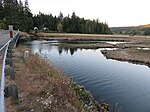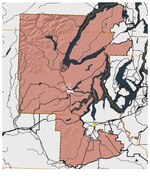Union, Washington
Census-designated places in Mason County, WashingtonCensus-designated places in Washington (state)Use mdy dates from July 2023
Union or Union City is a small census-designated place in Mason County, Washington, United States. The community lies along the southern shore of the Great Bend of the Hood Canal, near the mouth of the Skokomish River, which flows from the nearby Olympic Mountains. The U.S. Census reported a population of 631 inhabitants in the 2010 census. The ZIP Code for Union is 98592. State Route 106 is the main route through Union, leading to Belfair farther north, and Potlatch and US Highway 101 to the south.
Excerpt from the Wikipedia article Union, Washington (License: CC BY-SA 3.0, Authors).Union, Washington
State Route 106,
Geographical coordinates (GPS) Address Nearby Places Show on map
Geographical coordinates (GPS)
| Latitude | Longitude |
|---|---|
| N 47.356944444444 ° | E -123.09955555556 ° |
Address
State Route 106 5185
98592
Washington, United States
Open on Google Maps







